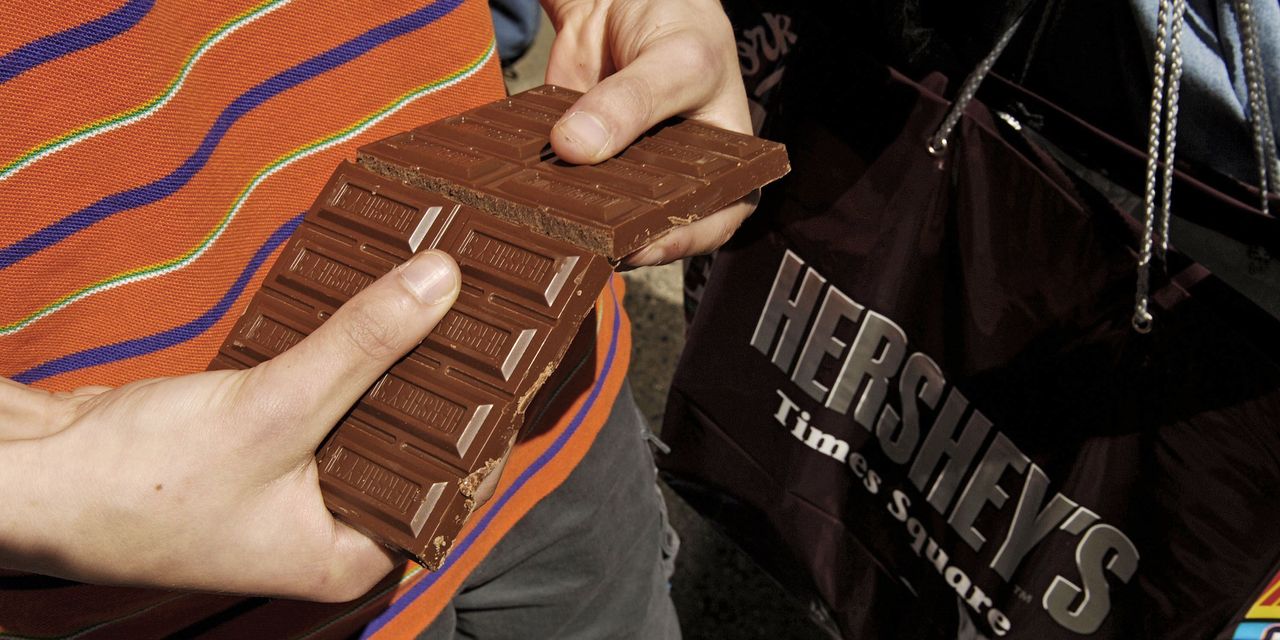A new crop of weight-loss drugs, if approved, could upend the healthcare industry. But the implications of these treatments could reach far beyond, including to the food and beverage industries.
Drugmakers are eager to play a role in this emerging market.
Novo Nordisk’s
(ticker: NVO) Ozempic, likely the most well-known of the obesity drugs, is an injectable that can curb users’ appetites.
Eli Lilly
‘s (LLY) Mounjaro—approved for diabetes but used by some for weight management—logged nearly $1 billion in sales in its latest quarter; Novo will report results Thursday. Shares of both Novo and Lilly jumped on Tuesday, notching some of their biggest percentage increases in more than 20 years.
Big players like
Pfizer
(PFE) and Lilly are developing weight-loss pills as well, which would be easier to take than the current injectables.
These drugs mostly work by suppressing appetites, making it easier for patients to reduce their caloric intake. That, in turn, could encourage them to adopt long-term changes to their diet and exercise, making it more likely for them to keep the weight off.
While that seems like good news for patients and those drugmakers, other companies—including those outside of healthcare—could feel a more negative impact.
Analysts at Morgan Stanley say if Americans’ appetites significantly decrease, that could hurt demand for food and beverage companies. Restaurants could get hit too, particularly if diners view them as unhealthy.
“Our research shows that anti-obesity medication (AOM) patients experience significant behavioral changes while they are on the drugs, as they reduce their consumption across most food categories, but cut back the most on foods that are high in sugar and fat such as confections, baked goods, and salty snacks, as well as sugary drinks and alcohol,” the analysts write. “AOM patients also report cutting back on eating at restaurants, with the most significant impact on fast food and pizza.”
To be sure, there are still plenty of unknowns. Two of the most anticipated drugs for weight management—Ozempic and Mounjaro—have only been approved by the Food and Drug Administration for other uses. There are also concerns about potential side effects for this class of drug, and even if these treatments are approved for weight loss, patients will likely have to meet certain criteria to qualify for a prescription.
But because the majority of adult Americans are overweight—a trend that’s on the rise in many other countries as well—investors and analysts are excited about these medications’ huge potential for years to come, especially if more are covered by insurance. If analysts’ outlooks for these drugs are correct, they could easily become multibillion-dollar blockbusters.
The Morgan Stanley team notes that AOM patients already account for a disproportionately high level of consumption in these categories. That means snacks and carbonated soft drinks could see a 2% to 3% reduction in consumption in 2035 if these drugs become widespread.
They estimate there could be some 24 million patients on AOMs by that time, cutting their daily caloric intake by some 20%.
Still, that pain will be felt unevenly. Within packaged food, companies that already have better-for-you and weight-management products—like
BellRing Brands
(BRBR), Simply Good Foods (SMPL), and
Vital Farms
(VITL)—will fare better, Morgan Stanley says. Meanwhile, confectionary-heavy companies like Hershey (HSY), Hostess Brands (TWNK), and
Mondelez International
(MDLZ) will likely feel more pressure to reshape their portfolio of products.
The so-called empty calories of alcoholic beverages and sweetened drinks will be another area to take a hit, the analysts say.
“Risk is most pronounced for alcoholic beverage companies with some AOM patients foregoing alcohol consumption entirely,” the firm writes.
Constellation Brands
(STZ),
Boston Beer
(SAM), and
Molson Coors
(TAP) are most exposed, given their U.S.-centric businesses, they add.
Large chain restaurants also “predominantly sell arguably unhealthy food,” and thus warrant monitoring, the analysts write. Of course, there are some fast-casual eateries that have already positioned themselves as healthier options, like
Sweetgreen
(SG) and
Cava Group
(CAVA), whose menus align more closely with weight-loss goals. Others like
Wingstop
(WING),
Krispy Kreme
(DNUT), and Domino’s Pizza (DPZ), however, have less flexibility in shifting to cater to more health-conscious consumers, the analysts say.
That said, 2035 is more than a decade away, and betting against Americans’ love of fatty and sweet foods hasn’t always been a winning proposition. Moreover, plenty of these stocks are still benefiting from near-term tailwinds spurring growth. Morgan Stanley still has bullish ratings even on some of the more exposed players listed above, like Domino’s and Mondelez.
For now at least, some of these consumer companies feeding our cravings could still see solid returns.
Write to Teresa Rivas at [email protected]
Read the full article here





